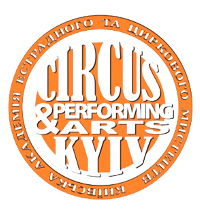Educator’s methodical competence in teaching English to students of the specialty “Musical art”
Abstract
The article explores methodical competence of an English teacher as an essential element in teaching students of the specialty “Musical Art.” The goal of the article is to define the notion “methodical competence of an English teacher,” characterize its components and discover the most effective methods of teaching English to students of the specialty “Musical Art.” To achieve the established goal, we have analyzed scientific literature on pedagogics and linguo-didactics. The definition of methodical competence has been given, and its structure has been analyzed. It has also been proven that components of methodical training correspond with the level of manifestation of a teacher’s methodical competence.
The article clarifies the contents of the notion of “methodical competence” in the light of modern educational paradigm. Based on the analysis of scientific literature, the author concludes that methodical competence of an English teacher results from the combination of methodical training and methodical experience. It has been established that common didactic competence and linguo-didactic competence are the two components of an English teacher’s methodical competence. The common didactic competence is based on the teacher’s skills in creating positive motivation in the process of teaching; successfully implementing the principles of individualization, differentiation and visualization; forming intellectual work skills, generalizing the previously acquired skills in the process of searching for information; and in developing techniques for individual and collective forms of work. In its turn, the linguo-didactic competence is based on the teacher’s knowledge of regularities in mastering the English language, probable difficulties faced by higher education applicants while working with instruction materials, as well as on selection of teaching methods, forms and aids. In addition, the article outlines the approaches which the author finds relevant for teaching English to students of the specialty “Musical Art”.
References
2. Олійник В. Наукові основи управління підвищення кваліфікації педагогічних працівників профтехосвіти: монографія. Київ: Міленіум, 2003. 594 с.
3. Остапенко Н. Теорія і практика формування лінгводидактичних компетентностей у студентів філологічних факультетів ВНЗ. Черкаси: видавець Чабаненко Ю., 2008. 330 с.
4. Сидоренко В. Модель професійної компетентності вчителя української мови і літератури в контексті впровадження компетентнісного підходу. Наукова скарбниця освіти Донеччини: науково-методичний журнал. Донецьк. 2010. № 2. Сс. 11 17.
5. Студенікіна В. Лінгводидактична компетентність учителів української мови в структурі методичної. Вісник ЛНУ імені Тараса Шевченка. 2010. № 22 (209). Ч. І. Сс. 85-90.
6. Bredel U., Hartmut G. et al. Didaktik der deutschen Sprache. Paderborn u. a.: Schöningh. 2006. 276 s.
7. Keller G. Lerntechniken von A-Z. Bern: Hans Huber. 2011. 168 s.
8. Selimi N. Wortschatzarbeit konkret. Eine didaktische Ideenbörse für alle Schulstufen. Baltmannsweiler: Schneider Hohengehren. 2010. 280 s.
9. Sprachwelt Deutsch. Werkbuch. Überarbeitete Ausgabe. Zürich: Lehrmittelverlag / Schulverlag plus. 2012. 120 s.
10. Sturm A., Hansjakob S., Maik Ph. Schreibförderung an QUIMS-Schulen. Grundlagen und Empfehlungen zur Weiterentwicklung des Programms. Erstellt von der Pädagogischen Hoch- schule FHNW, Zentrum Lesen, im Auftrag des Volksschulamts der Bildungsdirektion Zürich. 2013. 220 s.

 ISSN
ISSN  ISSN
ISSN 



